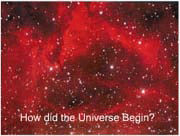"What we're doing is reproducing the conditions that existed at the very early universe, a few millionths of a second after the Big Bang," said Tuts, referencing the cosmic explosion that many scientists believe spawned the universe from one minuscule particle.
ALICE, an acronym for A Large Ion Collider Experiment, is run through the European Laboratory for Nuclear Research and involves physicists, engineers and technicians from around the world. Many of these scientists will examine the aftereffects of this latest ion collision as they try to step back further to the universe's emergence billions of years ago.
The lead ion, Tuts explained, is a lead atom that does not contain electrons -- thus, is more likely reflective of what matter existed in the millionths of a second after the Big Bang. By combining more and more basic elements, scientists hope to better understand how various particles came together to create the modern-day universe and all it contains.
"We hope to understand how we're put together, how these (basic) constituents go on to make protons and neutrons, which in turn go on to make the atoms that you and I are made of," Tuts told CNN.






